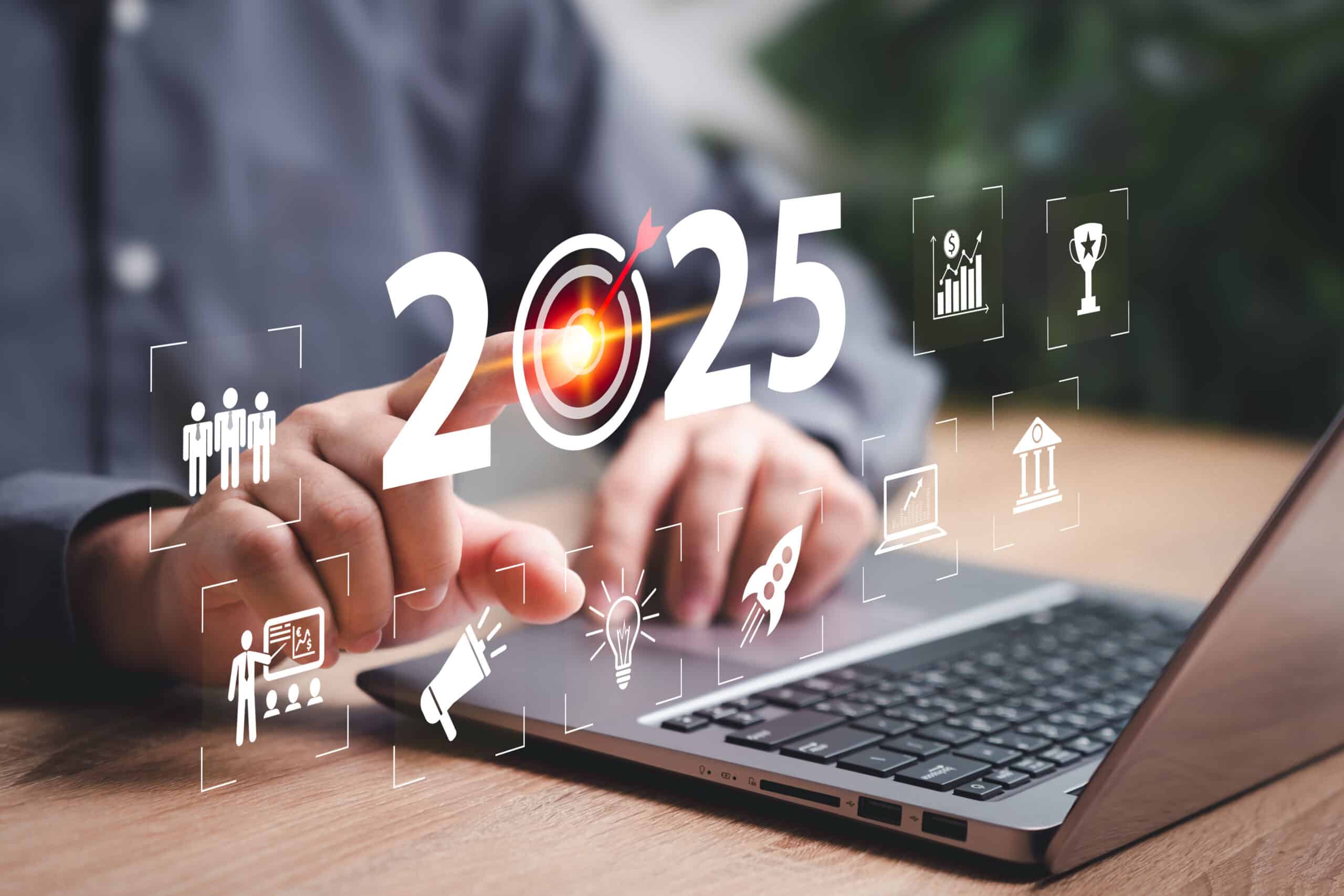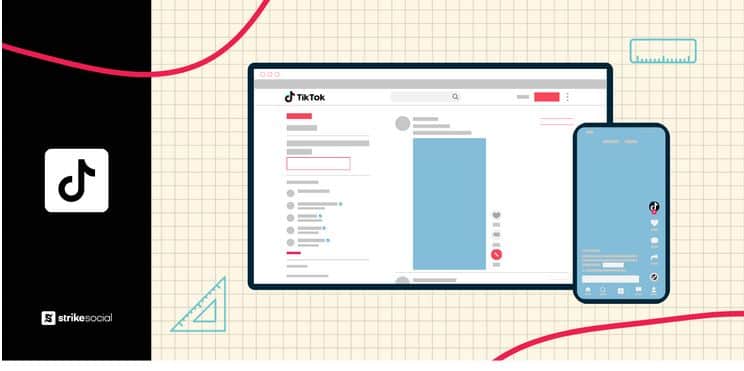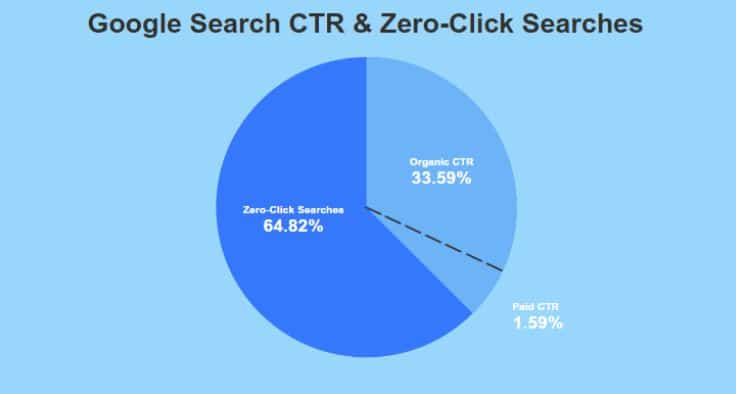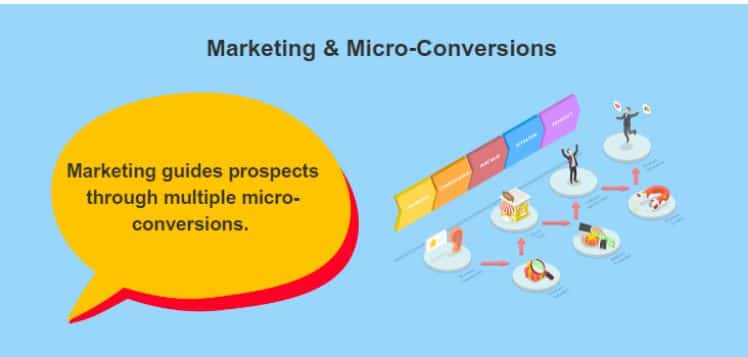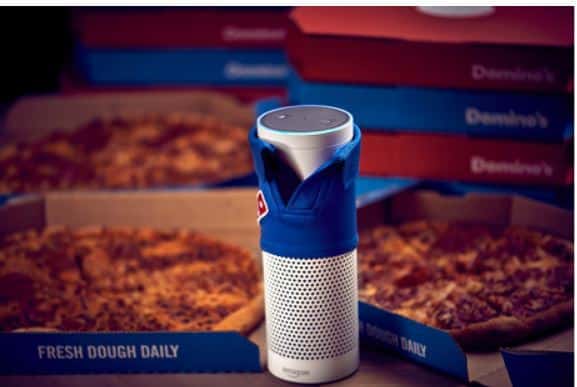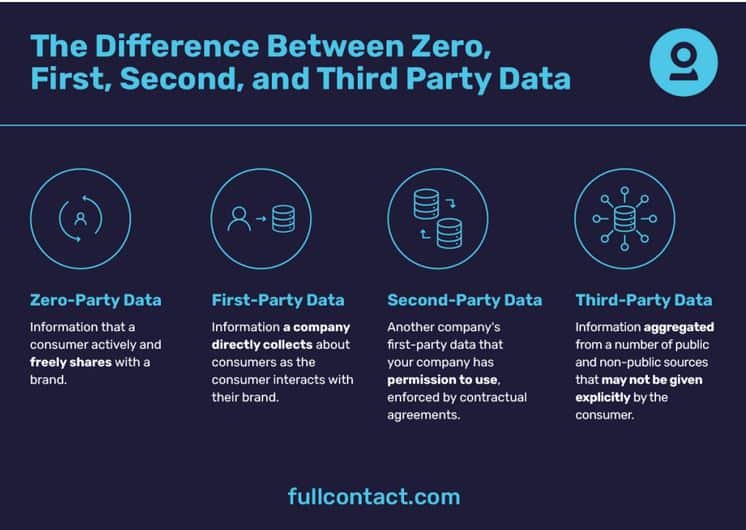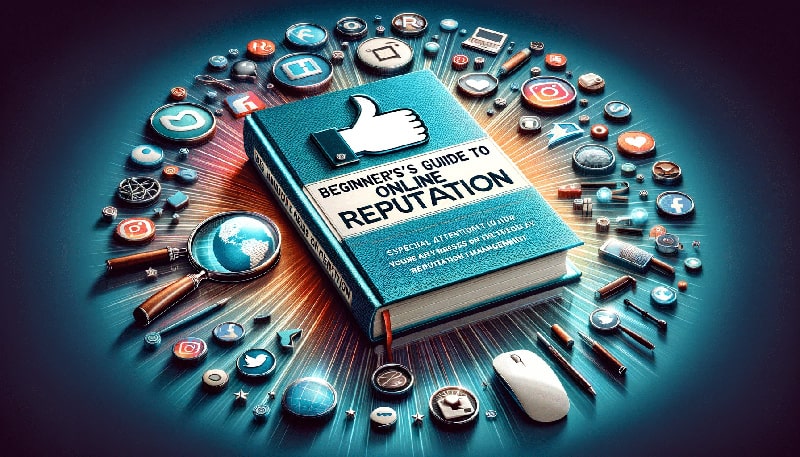Online marketing is always evolving. If you’re not sure where to focus your time and budget to maximize your marketing results? I wrote this guide for you.
In my decade of online marketing, I’ve seen trends come and go, but one thing always stands true: first movers win.
While staying ahead can be overwhelming, businesses that adapt quickly to emerging trends to see the biggest rewards.
I’ve learned that being an early adopter gives you an unfair advantage over the competition.
From AI-driven tools to zero-click SEO, these trends reshape how businesses interact with their audiences.
Let’s dive into the top 15 trends shaping online marketing in 2025 and how you can leverage them.
1. The Dominance of Short-Form Video Content
Short-form videos have taken the internet by storm, with platforms like TikTok, Instagram Reels, and YouTube Shorts leading the charge.
Studies show that 73% of consumers prefer watching a short video to learn about a product than other formats. This trend is a goldmine for brands aiming to captivate audiences quickly.
Steps to leverage Short-form video content:
- Create a content calendar: Plan 10–15-second videos featuring product demos, testimonials, or behind-the-scenes clips tailored to your audience.
A fashion e-commerce brand, for example, can showcase “Try-On Hauls” or styling tips in Reels.
- Repurpose existing content: Cut longer YouTube or webinar content into bite-sized highlights for TikTok, Instagram, or YouTube Shorts.
- Leverage trending audio: Use popular songs or sounds to boost algorithmic visibility. The TrendTok Analytics tool can help you identify what’s trending.
- Use platform-specific tools: Use CapCut for TikTok editing or Instagram’s in-app features for Reels to save time.
- Analyze performance: Review metrics like views, shares, and saves weekly. Double down on formats that perform best.
- Collaborate with micro-influencers: Partner with creators in your niche to boost authenticity.
To capitalize on this, focus on storytelling in under 60 seconds. Highlight value propositions, use hooks within the first 3 seconds, and always include a call-to-action (CTA).
Repurpose longer videos into shorter clips to maximize ROI. CapCut and Adobe Premiere Rush make editing easier for marketers.
Brands like Duolingo and Nike have leveraged TikTok’s virality to gain millions of followers and increase conversions. Short-form video isn’t just a trend; it’s a must-have in 2025.
2. The Rise of TikTok Ads for Lead Generation
TikTok Ads have revolutionized how brands reach Gen Z and millennial audiences. TikTok’s data shows that 70.1% of its users are under 30, making it a hotspot for brands targeting younger demographics.
With ad formats/specs such as In-Feed Ads, Branded Hashtag Challenge, and Spark Ads, businesses have endless creative opportunities to engage audiences.
Steps to get results from TikTok advertising:
- Set clear objectives: Choose ad goals such as lead generation, website traffic, or app downloads using TikTok Ads Manager.
- Target niche audiences: Use TikTok’s AI-powered targeting to reach users based on behavior, interests, and demographics. A fitness app might target health-conscious users who engage with workout videos.
- Choose the right format: Experiment with formats like Spark Ads (boosting organic content) or In-Feed Ads (appearing as native videos).
- Leverage TikTok Creator Marketplace: Collaborate with influencers to make ads feel authentic and relatable.
- Optimize CTAs: Use compelling calls-to-action like “Try Now” or “Join Us” that align with user intent.
- A/B test creatives: Test various video styles, lengths, and messaging to refine campaigns over time.
- Monitor trends: Stay on top of TikTok trends and adapt ads to match the platform’s tone and culture.
A SaaS brand could work with influencers to share “how-to” videos using their tools.
TikTok’s ad manager simplifies targeting based on behaviors, interests, and hashtags. Use storytelling to connect emotionally with viewers.
For example, the skincare brand CeraVe used TikTok ads to humanize its products, resulting in a 52% increase in sales.
TikTok ads also deliver ROI quickly, as their algorithm amplifies content organically, allowing for broader reach even on smaller budgets.
3. The Shift to Brand Authenticity in Marketing
Authenticity is crucial in 2025. According to a Stackla survey, 86% of consumers say authenticity heavily influences their buying decisions.
This trend inspires brands to be more transparent, relatable, and customer-focused.
How to be authentic with your marketing:
- Humanize your brand voice: Showcase employees, behind-the-scenes content, or stories that highlight your company values. A sustainable beauty brand could share videos about sourcing ethical ingredients.
- Be transparent about products/services: Share real product reviews or the steps behind your manufacturing process.
- Engage directly with customers: Reply to comments and DMs on social platforms, and address negative feedback openly.
- Invest in user-generated content (UGC): Encourage loyal customers to share their experiences through contests or hashtags. A travel company can ask users to post vacation videos with branded hashtags like #WanderWithUs.
- Host live sessions: Offer Q&A or demo sessions on Instagram Live, LinkedIn Live, or Facebook to connect in real time.
- Align actions with values: If your brand claims to support a cause, actively contribute or partner with related organizations.
Patagonia has mastered the art of authenticity by openly showcasing its environmental activism.
You may use Later and Buffer to schedule content that aligns with your brand voice while maintaining consistency. Authenticity builds trust, and trust converts casual followers into loyal customers.
4. AI-Powered Marketing Automation
In 2025, AI will be at the core of marketing strategies, enabling businesses to scale campaigns while reducing manual effort.
HubSpot’s data shows that 63% of marketers use AI to automate tasks such as email personalization and customer segmentation.
Businesses can identify patterns in customer behavior and target them with precision.
AI’s ability to analyze massive datasets quickly ensures more accurate campaign results.
For example, an e-commerce SaaS like Shopify uses AI to predict customer lifetime value and recommend upsells, increasing cart value by 20%.
As Ecwid expert says, “AI enhances sales by encouraging customers to purchase additional or upgraded products or services.”
To implement, start small with email personalization or chatbots like Drift.
Gradually expand into predictive analytics to optimize ad spend and boost ROI. AI allows you to work smarter, not harder.
5. Zero-Click Searches and AI Overviews
The SEO landscape is shifting toward zero-click searches, where users get their answers directly from search results without clicking through to websites.
A study by SparkToro revealed that 64.82% of Google searches end without a click. AI Overviews, Featured snippets, Knowledge panels, and “People Also Ask” sections drive this trend.
How to get more traffic from AI Overviews:
- Optimize content for featured snippets: Use tools like SEMrush to identify questions users ask. Format answers concisely in bullet points or tables for Google’s snippet preference.
- Write content with intent: Address specific pain points and provide actionable solutions.
If you’re a SaaS company, for example, you can create blogs targeting “Best CRM for Startups” with quick comparisons in the introduction.
- Use structured data: Add schema markup to help Google understand your content and increase visibility in zero-click searches.
- Experiment with AI-generated summaries: Use Perplexity or Claude to draft quick summaries that answer common questions.
- Develop engaging infographics: Include data-rich visuals that users can easily consume without leaving the page.
- Track zero-click results: Measure traffic changes and prioritize keywords that still bring high engagement.
- Create alternative CTAs: For zero-click searches, focus on building trust and encouraging newsletter signups or resource downloads.
To stay relevant, structure your content for voice search and position it for snippets. For example, include concise answers, bullet points, and schema markup.
Brands like Healthline dominate zero-click searches by structuring their medical content to rank in snippets, driving huge traffic from these formats.
“Optimizing for zero-click doesn’t mean losing traffic — it means gaining visibility and authority where users are looking,” explains Aleyda Solis, an international SEO consultant.
Use tools like Ahrefs and SEMrush to identify snippet opportunities. While the click-through rate (CTR) may decline, your brand presence and trustworthiness can skyrocket.
6. Focus on Micro-Conversions to Boost Funnel Engagement
While marketing may seem like getting the final sale, it’s more than that. It also guides prospects through multiple micro-conversions.
According to Melody Sinclair-Brooks, “Micro conversions are small actions that users take on a website, providing insight into their journey toward a primary goal. Look at which pages visitors are spending the most time on and tie that to the goals and revenue for your client.”
This trend will become more prevalent in the new year.
These small actions—signing up for a newsletter, downloading a free resource, or engaging with a chatbot—build trust and nudge users toward the ultimate purchase.
How to focus on micro-conversions to drive results:
- Identify micro-conversion touchpoints: Break down your buyer journey into smaller actions, such as clicking a product feature, subscribing to a newsletter, or downloading a guide.
- Optimize CTAs for every step: Use clear and enticing CTAs for actions like “Explore Features,” “Get the Free Ebook,” or “See Pricing.”
- Design landing pages for each micro-conversion: Focus on simplicity and ensure every page has a single, clear action.
- Set up email automation: For actions like form submissions, trigger follow-up emails that guide users toward larger conversions. If a user downloads a product guide, send them a case study email in the next step.
- Use retargeting ads: Target users who abandoned specific micro-conversions (like leaving the cart) with personalized messaging.
- Measure success: Use tools like Google Analytics or Mixpanel to track which touchpoints drive the most engagement.
- Test and refine frequently: Adjust layouts, CTAs, and lead magnets to boost performance.
Dropbox’s freemium model is a prime example, encouraging users to start with a free plan before upgrading to premium services.
Make sure to analyze your customer journey and add touchpoints to drive engagement at every step.
Track these with heatmaps or behavior analytics to refine the funnel further.
7. Interactive and Immersive Content is the New Standard
Interactive content—quizzes, polls, augmented reality (AR), and virtual reality (VR) has become the norm as brands seek to engage audiences more deeply.
According to Outgrow, interactive content generates twice the engagement as static formats and drives 52.6% higher conversion rates.
For instance, IKEA’s Place app uses AR to let users visualize furniture in their homes, resulting in a significant boost in online sales.
Quizzes like “Which Marketing Tool Is Right for You?” also help SaaS companies collect leads while delivering personalized value.
As marketing strategist Ann Handley says: “Interactive content creates a two-way conversation that static content can’t. It’s about connection, not just communication.”
Leverage the Outgrow or SnapAR tool to design engaging experiences that align with your goals. Immersive content not only captivates but also builds deeper connections with your audience.
8. AI-Powered Personalization for Customer Journeys
Personalization has evolved beyond using names in emails.
AI now enables hyper-personalized customer experiences, analyzing data to deliver tailored recommendations in real time.
Research by McKinsey shows that 71% of consumers expect personalization, and businesses that excel in it generate 40% more revenue.
Spotify’s “Wrapped” campaign is a prime example of AI-powered personalization, giving users a summary of their listening habits while creating shareable content.
Similarly, Amazon’s AI-driven product recommendations account for 35% of its total sales.
“AI personalization is about understanding your customer’s needs before they do,” says Andrew Ng, a leading AI expert.
Tools like Segment or Blueshift can integrate customer data to optimize experiences across touchpoints. For success, ensure your data is clean, updated, and ethically sourced.
How to personalize every stage of the customer journey:
- Gather behavioral data: Use analytics tools to track user actions on your website or app.
- Segment your audience: Group users by demographics, interests, or behaviors for targeted marketing campaigns.
- Use AI-driven recommendations: Leverage tools like Dynamic Yield or Algolia to suggest products or content based on past user behavior.
- Implement personalized email campaigns: Include user-specific product suggestions or custom subject lines.
Example: “Hi Alex, ready to complete your purchase?”
- Customize landing pages: Create dynamic landing pages tailored to visitor preferences.
- Leverage chatbots: Use AI-powered chatbots to provide instant, personalized customer support.
- Monitor ROI: Track increases in engagement and conversions to evaluate the success of personalization efforts.
9. Voice Search Optimization Becomes Essential
As smart devices proliferate, voice search now accounts for 50% of all searches, according to Comscore.
Optimizing for voice queries, which are often longer and conversational, is critical for staying visible.
For instance, Domino’s Pizza allows customers to order via Alexa, simplifying the buying journey.
Steps to optimize for voice searches:
- Research conversational keywords: Use long-tail, question-based keywords that mimic natural speech patterns.
Example: Instead of targeting “best laptops,” optimize for “What is the best laptop for students?”
- Use FAQ sections: Create dedicated pages with commonly asked questions to capture voice search traffic.
- Prioritize mobile-friendliness: Ensure your website loads quickly and displays properly on mobile devices.
- Implement schema markup: Add structured data to your website to enhance search visibility for voice queries.
- Focus on local search optimization: Use location-based keywords and claim your Google My Business listing.
Example: A restaurant should optimize for “Best Italian restaurant near me.”
- Create concise content: Voice assistants favor brief, direct answers of 40-50 words.
- Test results with voice assistants: Use tools like Alexa, Siri, or Google Assistant to ensure your content is discoverable.
“Voice search is rewriting SEO rules—it’s about direct answers and natural language,” explains Rand Fishkin, founder of SparkToro.
Prioritize mobile-friendly content, as most voice searches occur on smartphones, and track metrics using tools like Google Search Console.
10. The Shift Toward Zero-Party Data Collection
Privacy regulations like GDPR and CCPA have reshaped data collection practices.
In 2025, brands will focus on zero-party data—information willingly shared by customers, such as preferences and interests.
For example, clothing retailer ASOS offers quizzes to understand customer style preferences, creating a personalized shopping experience.
Zero-party data not only ensures compliance but also deepens customer trust.
“Zero-party data is about earning trust while gaining insights,” says Christopher Penn, a digital marketing strategist.
Steps to Implement this trend:
- Create interactive experiences: Use quizzes, surveys, and preference forms to collect data directly from customers in exchange for tailored recommendations.
Example: A fashion brand might offer a style quiz to personalize product suggestions.
- Offer value for data exchange: Provide exclusive discounts, personalized product bundles, or early access in return for customer preferences.
- Leverage loyalty programs: Build a robust loyalty system where customers willingly share data for better rewards and offers.
- Focus on transparency: Communicate how customer data will be used and emphasize privacy and security.
- Invest in data collection tools: Use platforms like Typeform or HubSpot for seamless zero-party data collection.
- Personalize marketing campaigns: Use collected preferences to create hyper-targeted email or ad campaigns, increasing engagement rates.
- Comply with regulations: Ensure data collection methods comply with privacy laws like GDPR and CCPA to maintain customer trust.
Use Typeform or HubSpot to collect zero-party data through surveys or interactive experiences.
Transparency and value exchange are key—always communicate why you’re collecting information and how it benefits the customer.
11. Augmented Reality (AR) and Virtual Reality (VR) in Marketing
By 2025, AR and VR are no longer niche technologies—they’re mainstream marketing tools. AR is projected to have 1.7 billion active users globally by 2025, according to Statista.
This makes it a prime channel for immersive experiences, especially in e-commerce and real estate.
IKEA’s AR app lets customers visualize furniture in their homes, reducing buyer hesitation.
Similarly, Sephora’s Virtual Artist allows users to try makeup virtually, driving a 50% higher conversion rate for AR users.
“AR and VR bridge the gap between physical and digital, creating unforgettable experiences,” says Cathy Hackl, a metaverse strategist.
Using AR/VR in your marketing campaigns:
- Choose the right AR/VR platform: Platforms like Snapchat, Instagram, and Shopify offer AR integrations for filters, try-ons, or shopping experiences.
- Create interactive experiences: Allow users to try products virtually, such as AR apps that let customers visualize furniture in their homes.
Example: IKEA’s AR app helps users see how furniture fits in their space before purchasing.
- Invest in immersive storytelling: Use VR for storytelling campaigns that let users experience your brand.
Example: Tourism companies offering virtual destination tours to entice bookings.
- Offer AR-based product customization: Allow customers to personalize products using AR, like choosing colors for shoes or designs for mugs.
- Host virtual events or showrooms: Use VR to create virtual trade shows or immersive product demonstrations.
- Integrate with eCommerce: Use AR to enhance online shopping, such as virtual try-ons for fashion or makeup brands.
- Monitor user feedback: Regularly gather insights to improve AR/VR usability and measure ROI for your campaigns.
12. YouTube TV Viewership: Surge in Connected TV Ads
YouTube TV is now a significant player in Connected TV (CTV) advertising, with over 150 million hours of daily viewership on TVs as of 2024.
Nielsen says that YouTube was responsible for 9.9% of TV viewing time in April 2024.
Brands are shifting to TV-specific ads tailored to large screens, offering a more immersive experience compared to desktop or mobile ads.
With viewers spending more time on CTV, brands are finding new ways to connect with family audiences and binge-watchers through unskippable or interactive ads.
A fitness brand showcasing a family-friendly workout program can advertise on fitness-related channels during prime-time TV hours.
Getting started with YouTube:
- Set up a YouTube TV ad campaign: Leverage YouTube’s Connected TV (CTV) ad format, which allows ads to run on TV screens. Create video ads optimized for TV, ensuring they’re high quality, and have a clear message.
- Target specific demographics and households: Use YouTube’s targeting options to reach households or specific audiences, such as parents or young professionals, based on your ideal customer persona.
- Develop engaging, high-impact video content: Invest in professionally shot videos tailored for the TV screen, focusing on branding, storytelling, and emotional connection. Keep the ads concise but impactful.
- Run Non-Skippable Ads During Prime Times: Use non-skippable ads (30 seconds max) during peak hours when your target demographic is likely to be watching. Prime times include evenings and weekends.
- Leverage Interactive Ads: Test YouTube’s interactive ad formats like overlays or clickable video links to increase viewer interaction and boost conversion rates.
- Track Metrics Using YouTube Analytics: Monitor viewer data like completion rates and CTR (click-through rates) to assess the success of your campaigns.
- Retarget Viewers Across Platforms: Once users watch your ad on YouTube TV, use retargeting ads on social media or Google Display Network to re-engage viewers and drive them to your website.
13. Hyperlocal Marketing for Niche Audiences
As consumers increasingly value localized experiences, hyperlocal marketing sees explosive growth.
Google reports that searches for “near me” have increased by over 500% in the past five years. Brands that tailor campaigns to specific locations or communities achieve greater relevance and ROI.
A prime example is Starbucks, which uses geo-targeted mobile ads to drive foot traffic to nearby stores.
Similarly, local businesses leveraging Google My Business gain a 70% higher chance of attracting walk-in customers.
“Hyperlocal marketing lets brands meet customers where they are—both physically and emotionally,” says Greg Sterling, a local SEO expert.
Steps to Implement:
- Use geotargeting tools: Platforms like Google Ads or Facebook Ads allow precise location-based targeting. For example, a local yoga studio can target ads to people within a 5-mile radius.
- Partner with local influencers: Work with micro or nano influencers in your target area to build credibility.
Example: A new restaurant opening in Austin could collaborate with Austin-based food bloggers to drive awareness.
- Optimize for local SEO: Include location-specific keywords like “best vegan café in Brooklyn” in your website and content. Register on Google My Business to appear in local searches.
- Host local events or campaigns: Organize community events or sponsor local causes to foster connections with your audience.
- Leverage localized social media ads: Create region-specific campaigns that speak directly to cultural or community values.
- Send geo-targeted push notifications: Use mobile apps to send real-time updates or offers when customers are near your location.
- Track and analyze: Use analytics tools to monitor the performance of your hyperlocal campaigns and optimize them for better results.
14. The Rise of Interactive and Shoppable Podcasts
Podcasts are no longer just audio experiences; they are becoming interactive, allowing listeners to shop directly from the podcast content.
With platforms like Spotify and Apple Podcasts experimenting with clickable links and dynamic ads, brands can now create seamless buying experiences for their audiences.
Interactive podcasts are bridging the gap between entertainment and e-commerce, making it easier for brands to measure ROI.
Example: A beauty brand sponsoring a podcast might include a shoppable link for their latest product during a live demo discussion.
Steps to Implement:
- Choose a Podcast Hosting Platform with Interactive Features
Use platforms like Spotify, Apple Podcasts, or Podbean that offer integration for shoppable links and dynamic content. - Partner with Relevant Podcasters
Reach out to influencers or podcasters within your niche. For example, if you sell health supplements, collaborate with fitness-focused podcasts that already have an engaged audience. - Create Engaging Content with Clear CTAs
Design podcast episodes with natural ways to integrate your product. Consider including discount codes or links to product landing pages mid-podcast. - Use Tracking Links to Measure Performance
Implement tracking links (e.g., UTM codes) to track conversions directly from podcast listeners, which allows you to optimize your strategy based on performance. - Cross-Promote Your Podcast
Promote the podcast across your other channels (email, social media) to expand your audience and increase the reach of your shoppable content. - Monitor Analytics
Use platform analytics to measure listener engagement, sales generated, and listener-to-customer conversion rates, refining your strategy as necessary.
15. Branded Video Content: Focus on Story-Driven Micro-Documentaries
Brands are moving beyond traditional ads to create short, story-driven documentaries that showcase their mission, values, or customer success stories.
Platforms like Wistia and Vimeo have become go-to hubs for hosting and analyzing such branded video campaigns.
Audiences are drawn to authentic storytelling, with 73% of consumers stating they prefer engaging with brands that tell meaningful stories.
Example: A B2B SaaS brand could create a 5-minute documentary showcasing how its software transformed a small business.
Steps to create branded content:
- Identify the core message or story you want to tell: Define a compelling narrative that aligns with your brand values. For example, if you’re an eco-friendly company, your story might focus on sustainability or how your products help reduce waste.
- Create high-quality documentary-style content: Work with a production team or agency that specializes in storytelling. Keep your video under 5 minutes for better engagement.
- Incorporate customer success stories: Highlight how real customers use and benefit from your product or service, as this adds authenticity and trust to your video.
- Host and share videos on branded platforms: Use tools like Wistia or Vimeo to host your branded content. They provide better analytics and give you more control over your video content.
- Promote your videos on social media and email: Share your micro-documentary across YouTube, LinkedIn, and your website, as well as through email campaigns to reach a wider audience.
- Use data to optimize future content: Track engagement metrics like watch time, CTR, and conversion rates to measure your documentary’s effectiveness. Use the data to improve the messaging and delivery of future video campaigns.
- Leverage influencers or partnerships for additional reach: Partner with influencers or brand ambassadors to share the video content, extending your brand’s reach and enhancing credibility through trusted voices.
How to Adapt Your Marketing Strategy to These Trends
Adapting your marketing strategy to the latest trends is essential for staying relevant in 2025. Here are actionable steps to seamlessly integrate these trends into your marketing approach:
1. Audit Your Current Strategy
Start by analyzing your current marketing efforts to identify gaps and opportunities. Tools like Google Analytics, HubSpot, and SEMrush can provide insights into what’s working and where you’re falling behind.
For example, if your website isn’t optimized for mobile, prioritize responsive design to align with the growing mobile-first trend.
2. Invest in Technology and Tools
Trends like AI-driven personalization and short-form video content require the right tools. Use AI platforms like Jasper or Writesonic to automate content creation and personalization.
For video content, use CapCut or Canva to simplify short-form production.
According to HubSpot, 91% of marketers who invested in video production saw improved ROI, making it a crucial area to allocate budget.
3. Focus on Customer-Centricity
Consumer behaviors are driving trends such as hyperlocal marketing and brand authenticity.
Conduct surveys or use social listening tools like Brandwatch to understand your audience’s preferences.
Build campaigns that speak directly to their needs. For example, if authenticity matters, showcase user-generated content or share behind-the-scenes glimpses of your brand.
4. Experiment and Optimize Continuously
The digital landscape changes rapidly. Run A/B tests on everything—email campaigns, landing pages, and ad creatives—to identify what resonates.
For example, if you’re exploring TikTok ads, start with smaller campaigns to test engagement before scaling.
Performance tracking ensures you’re not investing heavily in channels with low ROI.
5. Upskill Your Team
Train your marketing team to master emerging trends. Enroll in courses on platforms like Coursera or LinkedIn Learning to stay updated on AR, AI, and other technologies.
The more knowledgeable your team is, the faster you can implement changes.
6. Collaborate with Experts
Leverage influencers, agencies, or consultants experienced in these trends.
For instance, if you’re venturing into AR, partnering with an experienced developer ensures smooth execution.
According to Influencer Marketing Hub, influencer partnerships yield an average ROI of $5.78 per dollar spent, making collaborations a smart investment.
7. Plan for Scalability
Finally, ensure your strategy is flexible and scalable. Trends like AI and micro-conversions are only expanding. Build processes and systems that can adapt as these trends evolve.
Adapting isn’t about jumping on every trend—it’s about aligning with those that drive value for your business and audience.
Start small, monitor results, and adjust your strategy for long-term success.
Conclusion: Staying Ahead in 2025
The digital marketing landscape in 2025 is dynamic and innovation-driven.
From leveraging AI-powered personalization to harnessing the power of short-form video and AR experiences, staying ahead means embracing trends early.
Companies that fail to adapt risk being left behind as competition intensifies.
As marketers, our job is to anticipate changes and implement strategies that resonate with evolving consumer behaviors.
By integrating these trends into your marketing playbook, you can position your brand as a leader in a rapidly changing digital world.
Start small, experiment, and scale—because in 2025, the only constant is change.

